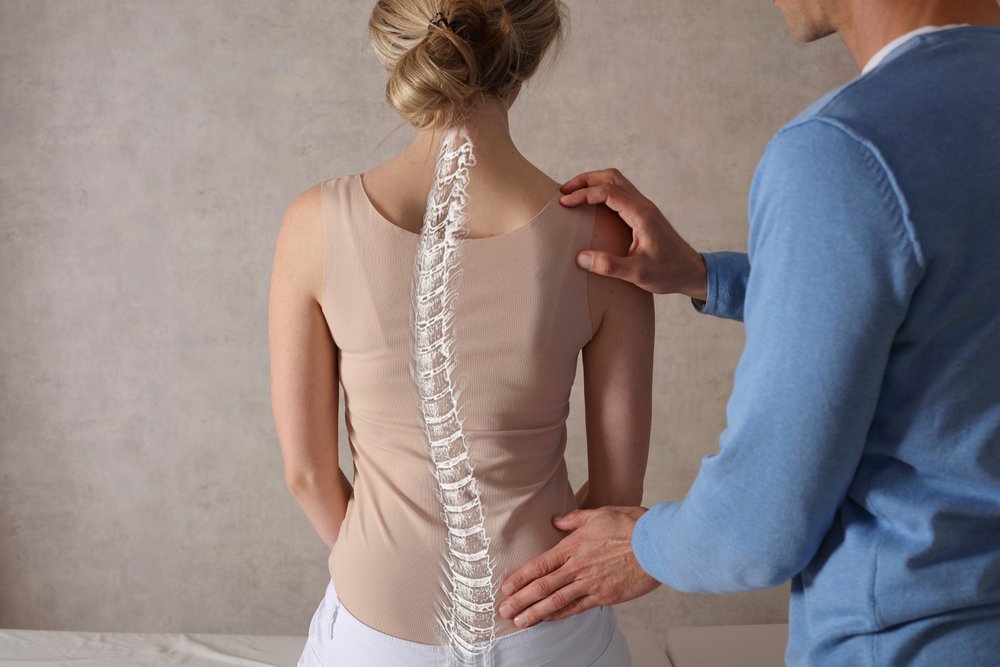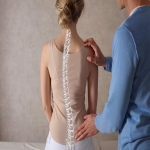Near the hairline on the nape of your neck, place a hand. Your spine begins there. One of the most significant parts of your body is your spine, which extends from the base of your skull to your lower back.
The curve in your back is a result of the stacking of your spine's small bones, known as vertebrae. For example, in addition to protecting the spinal cord, the spine supports the upper body so that you can stand up straight. It also aids in your ability to bend, twist, and move about in a variety of ways.

A flattened letter "S" is formed by the natural curvature of your spine at three points: the neck, chest, and lower back.
However, there are times when your spine may curve forward or sideways in an unexpected manner. Anxiety and exhaustion can be brought on by this. Diagnoses of an abnormal curve can range from barely noticeable to severely incapacitating, depending on the degree of curvature and your age.
Scoliosis and kyphosis are the two most common causes of curvature of the spine. Despite the fact that the circumstances are similar, they are not identical. Sideways curvature of the spine is referred to as scoliosis, and it can take the form of an "S" or a "C." Slouched posture is the result of kyphosis, which is the forward rounding of the back. Ask a scoliosis specialist to understand the thin line in details.
Scoliosis: The Fundamentals of the Curve
Scoliosis is more common in late childhood and early adolescence, according to doctors, when children are growing. It's more common in females, and it can be passed down through generations. Scoliosis symptoms can be obvious, such as a noticeable lean to one side or uneven shoulders or hips. Due to its elusive nature, screenings during routine annual physical exams are critical.
Age and degree of curvature both play important roles in determining the best course of action for scoliosis treatment. In children, bracing prevents the curve from getting worse, according to scoliosis specialists. It won't make a difference in adults, so it is better to stick to physical therapy and exercise instead. Surgery may be required if the curve is too severe.
A patient's needs determine whether braces are made of plastic or elastic. They're used until the patient's growth stops, and they have to be worn for the majority of the day.
Basics of Kyphosis: The Forward Curve
At any age, doctors says kyphosis is more common in adults. Kyphosis is usually linked to degeneration of the spine, which is the normal wear and tear of the spine's bones and ligaments.
Scheuermann disease is a type of kyphosis that is more common among adolescents. These symptoms are caused by the interlocking of several vertebrae in the same row. This disease has no known cause. Physical therapy and a brace are used to treat Scheuermann disease. Surgery may be required if the curve is large enough to cause significant pain.
Osteoporosis, spinal injuries, arthritis, and vertebral slippage all contribute to kyphosis, which is a curvature of the spine.
Treatment for kyphosis varies depending on the underlying condition. Osteoporosis usually does not necessitate spine surgery, as long as there is no pain or nervous system issues. In most cases, treatment of osteoporosis is necessary to prevent future fractures.
"Kyphosis can be more painful than scoliosis," according to experts. Surgery can be an option if the curve or the pain is severe enough. Call an expert from Neuroscience Specialist in Oklahoma to understand what treatment your body needs.
**Disclaimer- Information presented here is not intended to be qualified medical advice. Nothing expressed herein creates a doctor-patient relationship.

